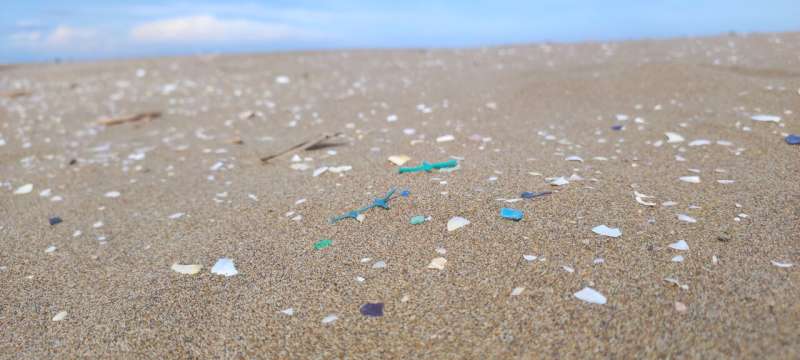
All aquatic species in the river mouths flowing into the Mediterranean Sea and Atlantic Ocean are contaminated with microplastics, with mollusks being the most affected due to their ability to filter water. Rivers are one of the main sources of pollution by microplastics (5 to 0.0001 mm in size) and nanoplastics (smaller than 0.0001mm) in the oceans.
Estuaries, as transition zones between rivers and the sea, are major hotspots for the accumulation of these particles, which are retained in sediments. They pose a threat to aquatic ecosystems given their ability to capture harmful chemicals from the surrounding environment, enter the food-web through ingestion, and bioaccumulate towards higher trophic levels, including valuable commercial species.
Of the bivalve species analyzed, 85% of mussels and 53% of oysters had ingested microplastics. Estuarine-dependent marine fishes (white mullet, silver mojarra and Brazilian mojarra) were 75% affected, while in coastal regions influenced by the estuarine outflow, 86% of European hake and 85% of Norwegian lobster contained microplastics or synthetic microfibers in their gut.
“Pollution is ubiquitous in estuaries and their adjacent coasts, in the Mediterranean, and in tropical and temperate zones,” says Patrizia Ziveri, oceanographer at ICTA-UAB and coordinator of the project, who points out that the amount of accumulated particles in sediments has increased in recent decades at the same rate as global plastic production, and that since 2000, the particles deposited on the seafloor have tripled.
This pollution poses a global threat to coral reef systems at all depths, causing a reduction in coral reef growth.
Particles that are not deposited on the seabed can be transported by ocean currents and tides hundreds of kilometers in just a few months. “A microplastic from the Ebro estuary in the Northwestern Mediterranean Sea can reach Sicily, in Italy, in six months,” says Ziveri.